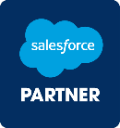- Solutions
-
Products
-
Resources
Sales Automation Tools | Cirrus Insight by Kristi Campbell View all Blog Posts >Get the App, Get the Sidebar, & Get Your Trial Going HereUnleash limitless growth opportunities by partnering with Cirrus Insight.
- Pricing
Filter By:
- All topics
- Sales Intelligence
- Salesforce
- Sales Productivity
- Sales Strategy
- Sales Prospecting
- Book More Meetings
- Sales Activity Data
- Company News
- Sales Leadership
- Sales Metrics
- Team Scheduling
- Prospect Smarter
- AI
- Serious Insights
- Comparison
- Conversation Intelligence
- Sync To Your CRM
- Email Blast
- Email Campaigns
How To Own Your Tech Stack Before It Owns You Part 1: Overview
If there’s one thing we’ve learned about this economy, it’s that no one knows anything. You have one set of economists predicting doom and gloom in the form of a recession. And then you have other economists who think we’re going to skate through a recession completely. We don’t know who’s right here. But here’s one thing we do know:
When you have a climate of uncertainty, companies cut costs. For example: 94% of the companies we recently surveyed told us they plan to consolidate their tech stack this year. And they’re not alone. There are good reasons for this. During the first year of the Pandemic, Amazon, Google, and Microsoft had a combined revenue of $1.2 Trillion Dollars. This was because, when the Pandemic hit, companies loaded up on as much software and other tech as possible. This was done in order to help their employees adapt to a dangerous and uncertain situation. The thing is, as the Pandemic went on… those companies also didn’t invest in how to train their employees on all the software that they signed up for.
Here's an example of the kind of training video that is valuable to teaching users how to use certain software.
A study done by DePaul University found that sales professionals who received education from their employers stayed with their companies longer and helped those companies reach a break-even point in sales 30% faster. In this article, we’re going to focus on sales professionals, since our research found that sales professionals are currently using up to ten different tools in order to close a single deal. In addition, 79% of Sales reps, according to Salesforce’s State of Sales (4th edition) have said they were forced to adjust to a new way of selling during the pandemic. This led to the out of control tech stack situation we mentioned. But the bottom line? Salespeople are using way too many tools and likely aren’t properly trained on how to use any of them.
So, we thought now was a good time to talk about what to consolidate, what to keep, and how to get the most out of your current tech stack before you add anything new. (And a lot of you are looking to add new and different kinds of software in 2023. Almost half of all the companies we talked to for our Benchmark Study stated they were looking to add MORE technology to their tech stack, particularly in the area of Seller Analytics.).png?width=830&height=467&name=Tech%20Consolidation%20Case%20Study%20v2.pptx%20(1).png) But it's important to note two major changes in the world of sales that came from the Pandemic:
But it's important to note two major changes in the world of sales that came from the Pandemic:
- Sales representatives found that they needed to “lean into their roles as strategic relationship builders, adapting to buyer needs with empathy and insights” according to Salesforce.
- On the management side, with many of the sales team members working remotely, there’s additional complication to consider. For one, back in 2018 it was reported that only ⅓ of the time spent by sales professionals was spent on actually selling something. A lot of that was due to administrative work like logging and filing all of the details of the sales pipeline and various customer touch points. This is something that only got more complicated with the move to remote work. In fact, our research, echoed by Salesforce’s State of Sales Report, found that 72% of Sales Professionals spend their week on non-Sales-related tasks.
We don’t need to tell you that sales reps prefer to sell in person instead of through a window on someone’s desktop browser, but by all accounts, it doesn’t seem like that world is coming back; which makes the discussion of what to keep, what to cut, and what to train on all the more important. Because this new world of selling means building trust before, during, and after the sale. All of which needs to be done as seamlessly and unobtrusive as possible. You don’t want to send a mass email out to potential prospects only for that email to wind up in the promotions tab, for example. These issues, and more, are now top of mind for all sales teams, and they’re increasingly depending on the right software, used to its fullest potential, to execute on that.
70% of organizations that spoke with Salesforce said their key focus during the pandemic was to re-skill and re-train their traveling sales professionals to sell from home. But now coming out of the pandemic, the focus has shifted on re-training the entire team on getting the most of the software they have and cutting the rest; with a big focus is on improved data quality and personalized outreach.  So to be clear: Organizations didn’t train their employees on all the new tools that they purchased. Instead, many sales teams now found themselves using Calendly for calendar scheduling, Outreach to generate pipeline, Email Analytics to track the performance of the messages they were sending. Snaplogic to connect their data across various platforms, and Yesware as a productivity plug-in. And if there was any training offered on these different tools, it’s not readily apparent from the data we’ve found in researching this article. Instead Sales Teams (to continue that example) were told they had new software, MAYBE given one or two product orientations and a chance to ask questions from a helpful sales or support representative, and then they were sent on their way.
So to be clear: Organizations didn’t train their employees on all the new tools that they purchased. Instead, many sales teams now found themselves using Calendly for calendar scheduling, Outreach to generate pipeline, Email Analytics to track the performance of the messages they were sending. Snaplogic to connect their data across various platforms, and Yesware as a productivity plug-in. And if there was any training offered on these different tools, it’s not readily apparent from the data we’ve found in researching this article. Instead Sales Teams (to continue that example) were told they had new software, MAYBE given one or two product orientations and a chance to ask questions from a helpful sales or support representative, and then they were sent on their way.
One challenge for organizations and their leadership teams is that each department has its own tech stack. What the sales team is using may be completely different from what the Account Executives need to use, and that’s because each department is going to have its own goals and metrics to keep track of. For example, SDRs are all about high levels of activity, the more the better. So if they can find a piece of software that helps them drive more calls, more emails, and more touch points with their prospects? All the better. Account Executives on the other hand are more about the value they add to each activity and touch point. That’s because of the value they add to the relationship being formed between the company and its prospects. So it’s less about tracking quantity and more about tracking the quality, or meaningful activity that ultimately impacts the pipeline. This means many companies could face a potential headache when they've purchased software, and the Account Executives, for example, are only getting used, maybe, 10% of the time.

.png?width=1268&height=1772&name=Sidebar-C%20(1).png)
